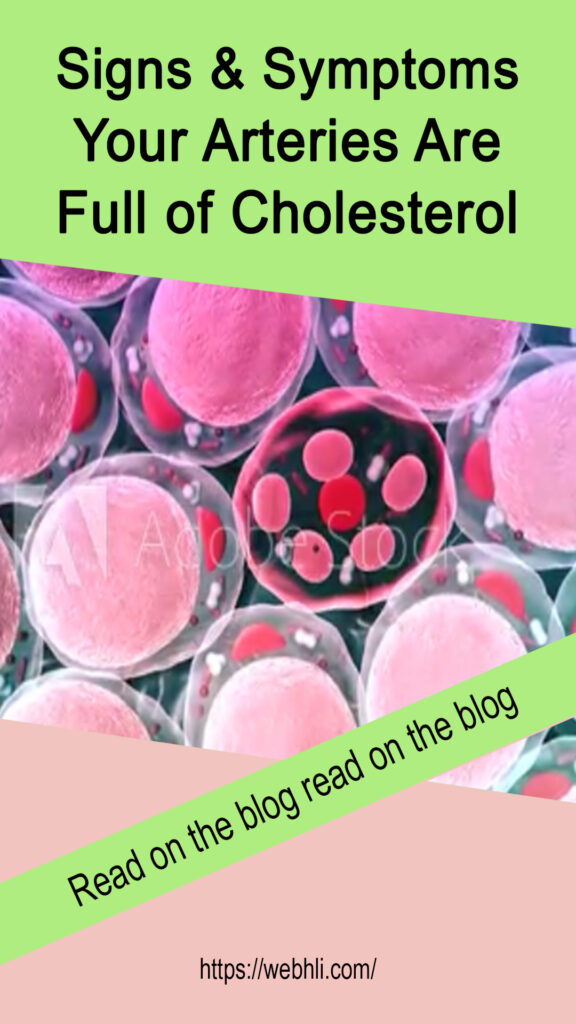
Cholesterol is a fatty substance vital for various bodily functions, including hormone production and cell membrane formation. However, when cholesterol levels become too high, it can lead to the buildup of plaques in the arteries, a condition known as atherosclerosis. This buildup narrows the arteries, restricting blood flow and increasing the risk of serious cardiovascular events such as heart attacks and strokes. Recognizing the signs and symptoms of clogged arteries is crucial for early intervention and treatment.
Understanding Cholesterol and Atherosclerosis
Cholesterol travels through the bloodstream attached to proteins, forming lipoproteins. There are two main types of cholesterol:
- Low-Density Lipoprotein (LDL): Often referred to as "bad" cholesterol, high levels of LDL can lead to plaque buildup in the arteries.
- High-Density Lipoprotein (HDL): Known as "good" cholesterol, HDL helps remove excess cholesterol from the bloodstream.
Atherosclerosis occurs when LDL cholesterol deposits form plaques on the artery walls. Over time, these plaques harden and narrow the arteries, impeding blood flow and causing various health issues.
Signs and Symptoms of Clogged Arteries
Clogged arteries often develop gradually, and many people may not experience symptoms until the condition is advanced. However, several warning signs can indicate the presence of significant arterial blockages.
1. Chest Pain (Angina)
- Description: One of the most common symptoms of clogged coronary arteries is chest pain or discomfort, known as angina. It may feel like pressure, squeezing, fullness, or pain in the center of the chest.
- Cause: Angina occurs when the heart muscle doesn't get enough oxygen-rich blood, typically during physical exertion or stress.
2. Shortness of Breath
- Description: Experiencing shortness of breath, especially during physical activity, can be a sign of reduced blood flow to the heart.
- Cause: When the heart cannot pump enough oxygenated blood to meet the body's needs, it can lead to breathlessness.
3. Fatigue and Weakness
- Description: Unexplained fatigue or weakness, particularly with exertion, can signal that your heart is struggling to pump blood effectively.
- Cause: Reduced blood flow to the heart and muscles can cause tiredness and general weakness.
4. Pain in the Extremities
- Description: Pain, numbness, or cramping in the legs, hips, or calves when walking or climbing stairs may indicate peripheral artery disease (PAD), a condition where the arteries in the limbs are clogged.
- Cause: PAD results from reduced blood flow to the extremities due to narrowed arteries.
5. Erectile Dysfunction
- Description: Men with clogged arteries may experience difficulty achieving or maintaining an erection.
- Cause: Erectile dysfunction can result from reduced blood flow to the penile arteries, often an early indicator of cardiovascular disease.
6. Heart Palpitations
- Description: Noticeable irregular heartbeats or palpitations can be a sign of restricted blood flow to the heart.
- Cause: Blocked arteries can disrupt the heart's normal rhythm, leading to palpitations.
7. Sweating and Nausea
- Description: Unexplained sweating, nausea, or vomiting, especially when combined with chest pain or discomfort, can be warning signs of a heart attack.
- Cause: These symptoms result from the body's response to reduced blood flow and oxygen to the heart.
8. Dizziness or Lightheadedness
- Description: Feeling dizzy or lightheaded can indicate that the brain is not receiving enough oxygen-rich blood.
- Cause: Reduced blood flow due to clogged arteries can lead to these sensations, particularly during exertion.
Risk Factors for Clogged Arteries
Several factors increase the risk of developing atherosclerosis and clogged arteries:
- High Cholesterol Levels: Elevated LDL cholesterol and low HDL cholesterol levels contribute to plaque buildup.
- Hypertension (High Blood Pressure): High blood pressure can damage the arteries, making them more susceptible to plaque formation.
- Smoking: Tobacco smoke damages the arterial walls and increases cholesterol levels.
- Diabetes: High blood sugar levels can damage blood vessels and promote atherosclerosis.
- Obesity: Excess body weight is associated with higher cholesterol levels, high blood pressure, and diabetes.
- Sedentary Lifestyle: Lack of physical activity contributes to obesity and poor cardiovascular health.
- Unhealthy Diet: Diets high in saturated fats, trans fats, and cholesterol contribute to plaque buildup.
- Family History: A family history of heart disease increases the risk of atherosclerosis.
Prevention and Management
Preventing and managing clogged arteries involves lifestyle changes and, in some cases, medication:
- Healthy Diet: Eat a balanced diet rich in fruits, vegetables, whole grains, lean proteins, and healthy fats. Limit saturated fats, trans fats, and cholesterol.
- Regular Exercise: Engage in regular physical activity, such as walking, cycling, or swimming, to improve cardiovascular health.
- Quit Smoking: Avoid tobacco products to protect your arteries and overall health.
- Maintain a Healthy Weight: Achieve and maintain a healthy weight through diet and exercise.
- Manage Diabetes and Blood Pressure: Keep blood sugar and blood pressure levels under control with medication, diet, and lifestyle changes.
- Medications: Statins and other medications can help lower cholesterol levels and manage blood pressure.
Conclusion
Recognizing the signs and symptoms of clogged arteries is essential for early intervention and prevention of serious cardiovascular events. By understanding the risk factors and making healthy lifestyle choices, you can reduce the risk of atherosclerosis and maintain better heart health. Regular check-ups with your healthcare provider are crucial for monitoring your cholesterol levels and overall cardiovascular health.



 Protected by Patchstack
Protected by Patchstack